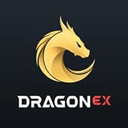
Review on Defi by Merve Duru

defi-related
Decentralized Finance or, commonly referred to these days as “DeFi”, has to be one of the hottest words in the blockchain, crypto or even financial world these days. If ICO was the crypto catchphrase of 2017, “crypto winter” the 2018 moniker, IEO defined 2019, then 2020 will certainly be remembered for being the year of DeFi.
The truth is, DeFi’s the bandwagon right now because of the incredible returns on investment it has so far provided. Remember how we talked about financial services like investments and savings account? Well, a typical bank in a developed economy might offer you interest rates per annum close to zero in this economy. Most banks would consider a 5% return per annum a high-yield investment.
In DeFi, they’re promising double-digit percentage profit figures annualized yield. And people are reaping those rewards today.
But we see many, many caveats.
The fact that they actually aren’t truly decentralized — not compared to Bitcoin, anyway — doesn’t really matter.
But many of these are projects that generally have full decision-making powers belonging to developers. Some may not even have completely open-source coding and smart contracts. Others may not even all be fully non-custodial in wallet management. And yes, according to even famous crypto investor @CryptoWhale, 99.99% of DeFi tokens are secam.
It’s a high-risk space at the moment, so we always advise caution. Tread carefully, do your own due diligence. Never believe in guarantees of profit. And always only invest the amount you are willing to lose.
DeFi’s great. We like decentralized finance and hope that one day it becomes the normal way people access financial services. But for now, it will take time to mature and ride out of this Wild West period, just as Bitcoin needed to in its early days.
Pros
- All transactions are transparent
- Networks are secure and traceable.
- the control of the money is in the hands of the users
- 24-hour trading volume
Cons
- not a free system










